Opinion
How a New Wave of ‘Hypersentimental’ Portraiture Is Serving Up Painting for the Age of Vibe Shifts and Nano-Influencers
Or: Why is everyone painting their cool friends all of a sudden?
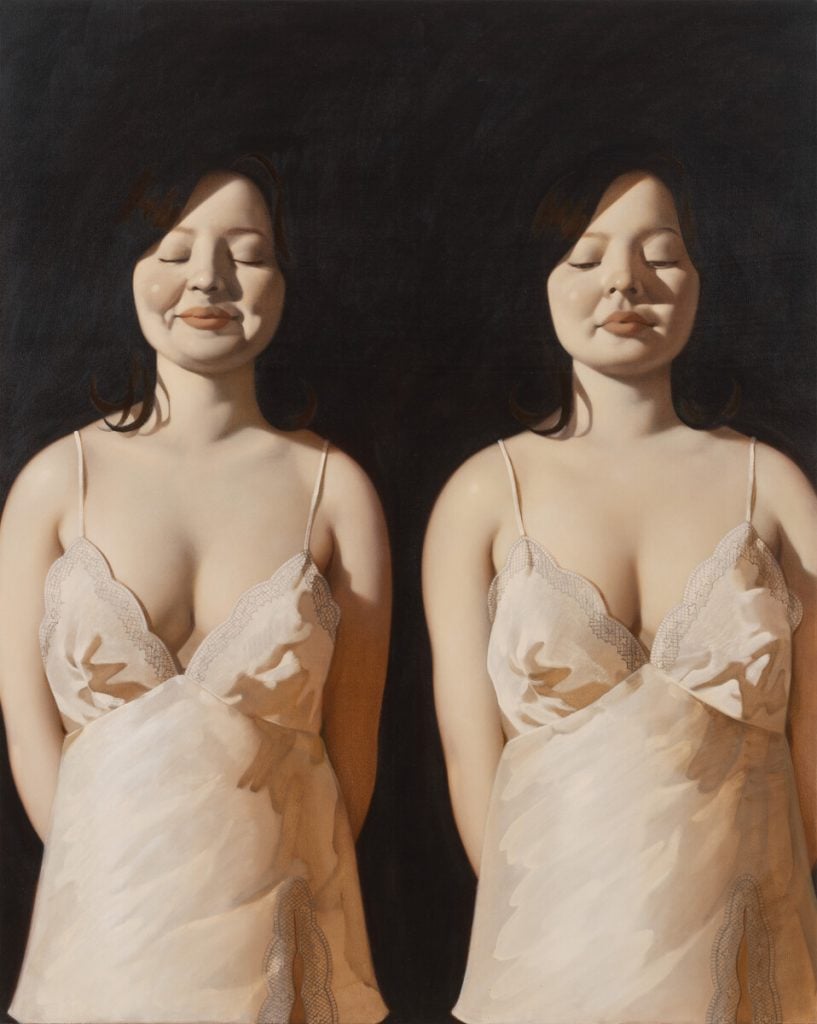
Or: Why is everyone painting their cool friends all of a sudden?

Kate Brown

Lucas Zwirner faces to the side in a swirl of pigment washes of purple and blue. When Elizabeth Peyton’s painting of her friend, the heir-apparent to the Zwirner gallery empire, debuted at Art Basel Hong Kong, art-world forums lit up.
But the tittering online was not because the work was particularly stylish or even because, according to rumors, it may have been spurred into being by a romance. It was because Peyton was using her art to signal something about her social network. As some journalists pointed out, the director and the artist are professionally intertwined now. Officially, just a few weeks before the painting popped up on the fair floor, Peyton had left Gladstone Gallery behind when signing with David Zwirner.
This subtext was like a hyperlink hidden within what was, on the surface, a sentimental painting of a friend. We’ve been seeing a lot of paintings in this vein lately: works that play on intimate depicted relationships which are coded, like a video-game Easter egg, in a way that is discernible ideally for those who are also members of a specific in-crowd, or who aspire to be.
Examples that jump to mind include Gagosian gallery star Anna Weyant’s Two Eileens (2022), which got people talking via its doubled image of Eileen Kelley, “sexpert,” host of the Going Mental podcast, and niche celebrity. (Kelley returned the favor by having Weyant on the podcast to talk about art-world sexism.)
Or think of something like Constance Tenvik’s Kenny On The Day When I Exchanged A Mind Map For Plastic Gloves, Printed Out Official Documents & A Cab To The Airport (2020), depicting art dealer, writer, and gadfly Kenny Schachter, recognizable by his glasses and signature track pants, but identified knowingly only by his first name.
Such scene-y figurative portraiture combines an awareness about access to a scene with a tenderness for it. If the viewer gets the fine print (as more than a few did when it came to that Peyton-Zwirner link), then they too gain some level of membership.
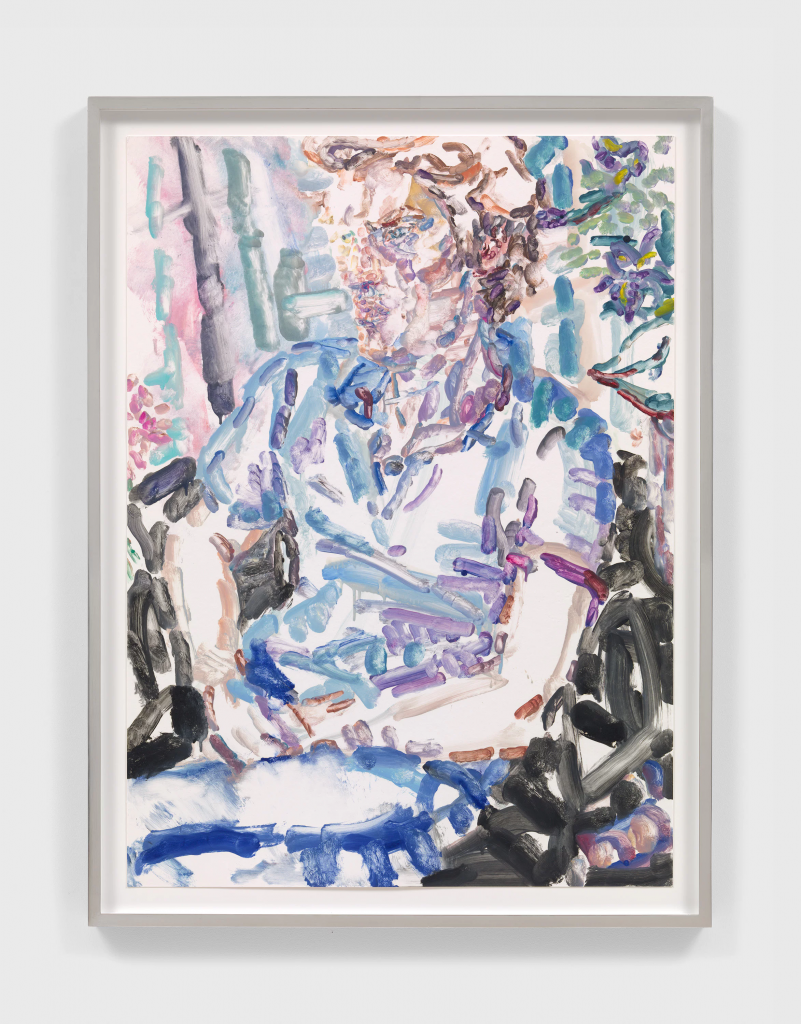
Elizabeth Peyton, Lucas Zwirner (2022). Courtesy of David Zwirner.
This trend—let’s call it hypersentimental painting—can be seen from a few angles. The clique-based realism that you have been seeing more and more of late is surely a by-product of our algorithmic drifts into social clusters. Social bubbles have become so pronounced over the last years that it can be hard to reconcile with anyone who sits beyond them.
Such digital fragmentation was further aggravated by the pandemic, which shrunk down these already siloed groups. With such tightened virtual micro-communities, to paint what one intimately knows and what their peer group will have a special appreciation for seems only natural.
At the same time, many of us feel more exposed than ever before. Though people have been proudly and loudly moving into smaller forums via “Close Friends” lists, Discord channels, Mastodon platforms, and Telegram or WhatsApp groups, that mass migration still comes against the background of a lot of angst about living life in public online.
Most of our attention and time remains captured the big platforms. The marketing tactics and hyper-scrutiny within these places have become so unavoidable that if you want to preserve any sense of subcultural cachet in these arenas, interacting necessitates a certain kind of deliberate encryption.
Against this background, the proliferation of this strain of subjective painted scenarios focused on members of an artist’s personal world—be they lovers, family, or friends—is a smartly positioned move. This kind of painting champions micro-community as content but also, crucially, as sensibility. It’s all about painting in a way that speaks to those who get it while still catching the eye of those who don’t. That pair of outcomes, when they work out, provides a double reward.
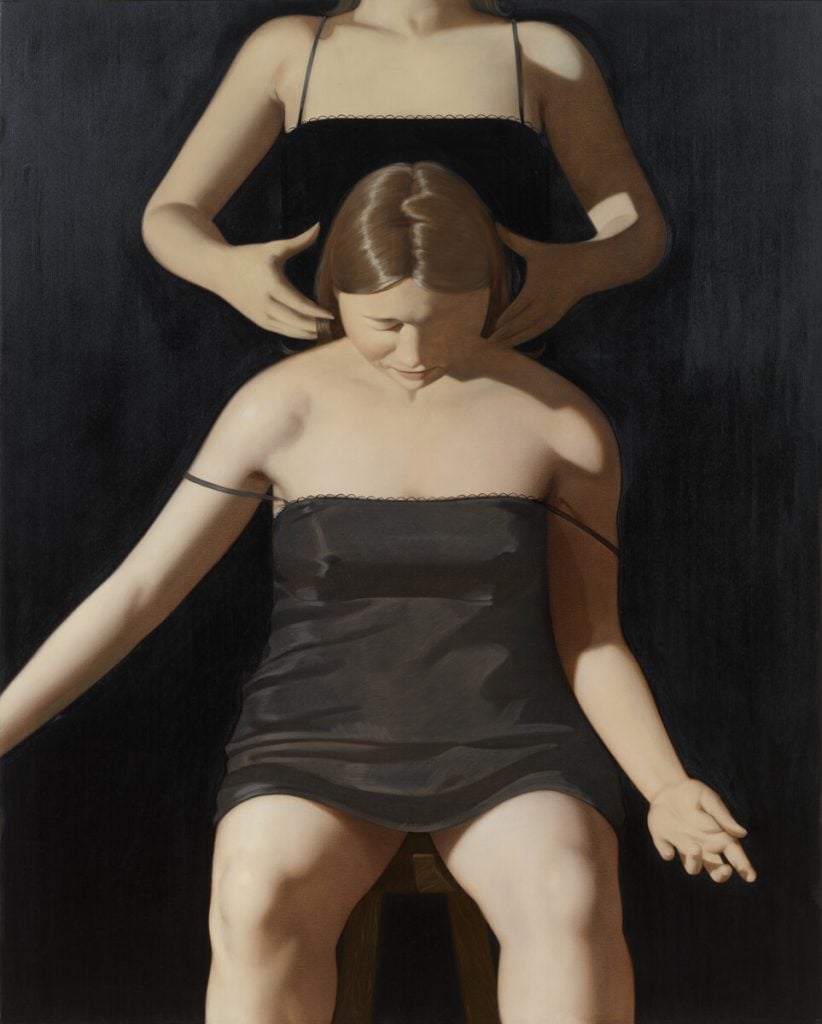
Anna Weyant Emma, (2022). © Anna Weyant. Photo: Robert McKeever. Courtesy Gagosian
What I am calling hypersentimentalism has gestated in the long tail of figuration that blossomed in tandem with the Age of the Influencer around 2014. Figurative painting circulated well within the Instagram economy: Easily consumed images of stylized figures resonated with social media as a platform for performing and curating identity. (In 2020, Tamara de Lempicka, an artist whose stylish Art Deco portraits were long considered kitsch, was even given an attempted rebrand as a “Queen of Instagram” before her time.)
By the second decade of the millennium, figuration was still booming, but frustration with the major forms of it was building alongside frustration with the fakeness and hyper-performativity of this era of social media.
In 2020, critic Alex Greenberger dubbed a lot of the whimsical new nouveau Surrealist and nouveau Pop painting, which had enchanted the market, as “zombie figuration.” By 2021, art historian Darby English cautioned that the astonishing vogue for figuration by Black painters was limiting: “To me, the worrisome thing about a flood of figuration is the time and resources we aren’t spending on the part of us we can’t image.” In New York, the most recent Whitney Biennial took a sharp turn towards abstraction and a language of opacity, making deliberate demands of the audience to invest in artists’ backstories.
Hypersentimentalism’s laser-focus on niche knowledge and micro-communities offers a way to keep faith with the strengths of figuration, while still positioning oneself against some of these frustrations. It follows an “IYKYK” logic, playing up a layer of insider opacity. (For those who don’t know, IYKYK stands for “if you know, you know.”)
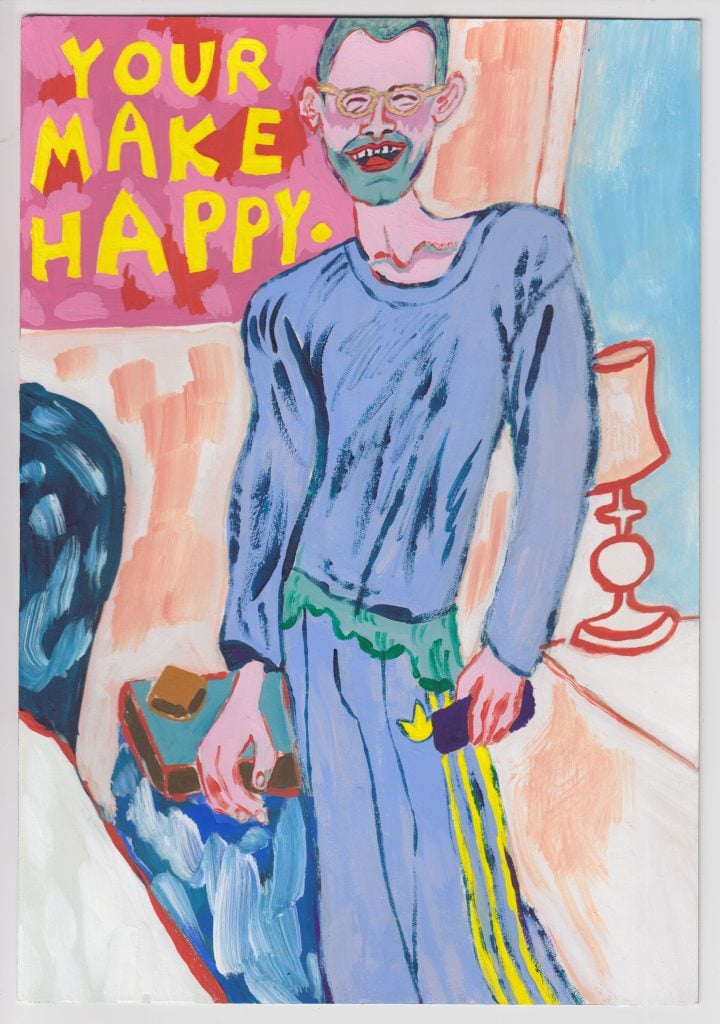
Constance Tenvik Kenny On The Day When I Exchanged A Mind Map For Plastic Gloves, Printed Out Official Documents & A Cab To The Airport, (2020). Courtesy 56 Henry
Tellingly, a parallel development has happened in marketing, where old-fashioned influencers are no longer the hot commodity. Instead, brands are turning to micro-influencers—or even nano-influencers.
In fashion, Lauren Cochrane notes the rise of the “IYKYK model.” Casting niche personalities over professional models “adds a layer of authenticity… Rather than choosing someone solely for their beauty and ability to look great in clothes, they are bringing the actual people they would like to wear their labels into the campaign. And if they share their love of the brand with their influential friends and followers? Even better.”
Indeed, that fashion phenomenon has itself notably synthesized with the art world. Take collector Karen Boros walking the Balenciaga runway for Spring/Summer 2020, an event that caused a small flurry of excitement in the German art world. The micro-celebrity may not have been noticed by the many thousands more who watched and reposted the show, but the right (high-net-worth) people likely did.
More recently, art critic Dean Kissick was among those modeling in a Marc Jacob’s Heaven spring 2023 campaign, a lookbook that was a horizontally scrolling eye-spy of various New York micro-celebrities. (The White Lotus star Michael Imperioli, clad in a skull-print hoodie‚ was perhaps the most famous among them—though he still feels like a niche pick).
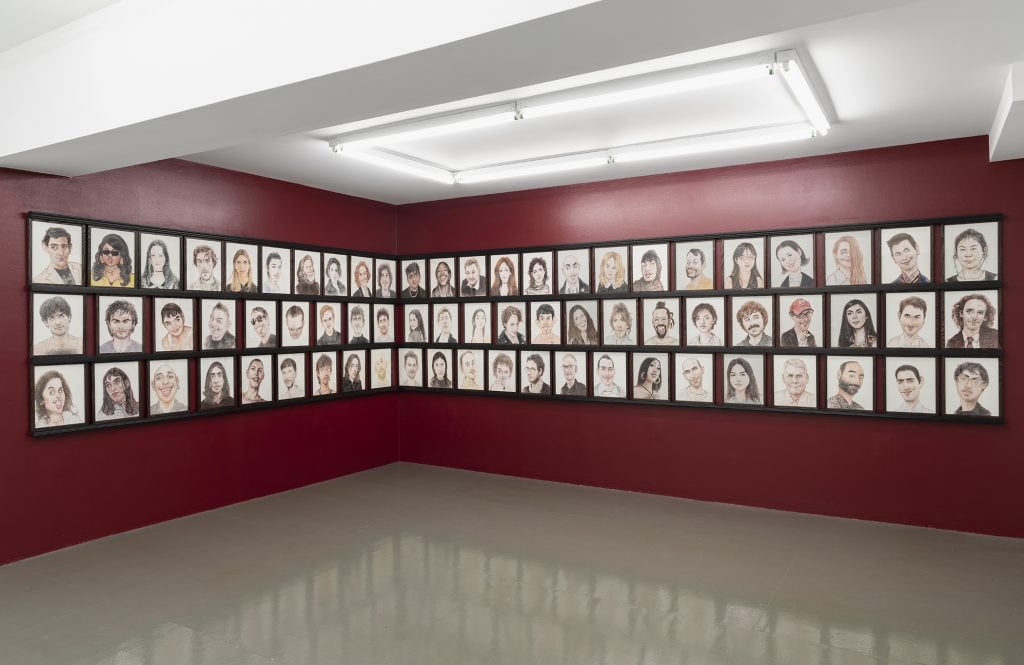
Installation view of Amalia Ulman’s show “Jenny’s” at Jenny’s. Courtesy of the artist and Jenny’s. Photo by Joerg Lohse
In recent art, examples of this guessing-game, who’s-who style are percolating everywhere.
Chloe Wise’s rise was spurred on in part by her paintings of New York friends going viral. In Wise’s vibrant canvasses, you aren’t told you are supposed to recognize, say, model and artist Richie Shazam among the three embracing figures in 2019’s Polysemic Primavera (a hypersentimentalist tic: titles never dare belie the names of the muses in the painting). Spotting Shazam’s half-face again peering out of another Wise work, Some pleasant lies would be nice (2021), feels as if you are being given membership to the in-crowd—even if it is a low-tier level of access.
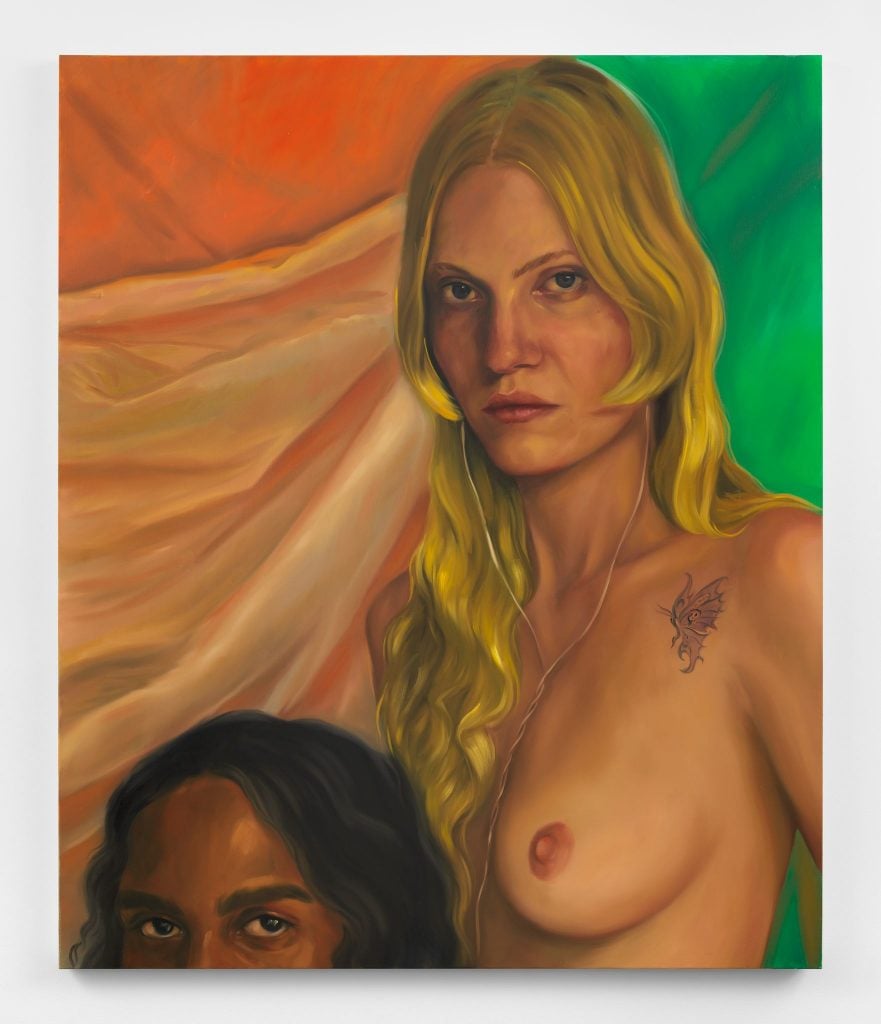
Chloe Wise, Some pleasant lies would be nice (2021) © Chloe Wise. Courtesy of the Artist and Almine Rech. Photo: Dan Bradica
You could follow that thread downtown to Amalia Ulman’s exhibition “Jenny’s” at the trendy gallery Jenny’s, featuring a dense, salon-style gallery of portraits of friends and scene-makers. Though working as much in the tradition of conceptual installation as figurative painting (I do not think these artists follow any formal rules), Ulman sounds some of the familiar notes.
The show was an homage to the Theater District restaurant Sardi’s, whose walls are adorned with caricature sketches of New York theater folk. Ulman replicated the caricature salon hang, only with figures who either exist in or orbit around the downtown cultural scene in New York.
Tagged are artists Anna-Sophie Berger, Seth Price, Heji Shin, and Jordan Wolfson, among others. There are also the prestigious Stadelschule professors Josef Strau and Michael Krebber, as well as art critics and authors, such as Natasha Stagg, Stephanie LaCava, and Dean Kissick (again).
In February, Swiss artist Tobias Spichtig debuted a whole family of paintings at a sleek show of figurative works (alongside abstract paintings and sculptures) at O-Town House in Los Angeles. Though Spichtig has incorporated the quotidian or social into his work before—clothes left by friends have worked their way into his sculptures, and there are several paintings of his partner—there was always a degree of remove from the overtly sentimental.
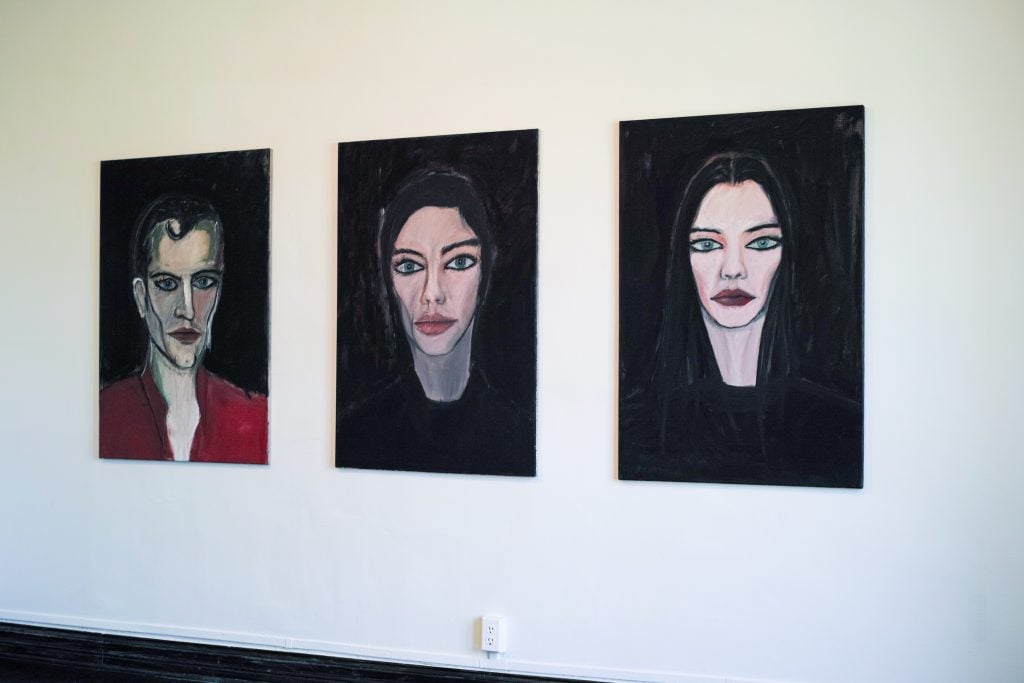
Tobias Spichtig Dear Friends on view at O-Town House, Los Angeles. Photo: Tobias Spichtig
His O-Town House show, “Dear Friends,” foregrounds feelings—its title seems to play on a party invitation or a social media post, but also, refreshingly, just says what the show is about. It featured a series of identically scaled paintings: of his partner, but also friends.
And so, you might pick out artists like Klara Linden or Xiangyu He. Each one gazes out, their skin and eyes bright against black backgrounds as slightly tall portraits that recall iPhone screens. The images, which have a gothic quality, are not realistic exactly, but rather look to capture an essence of each sitter. The exhibition text described the “uncomfortable desire for unlimited intimacy,” manifesting in Spichtig’s “emotional headshots.”
That same candidness echoes in a recent show at Deborah Schamoni in Munich. The names of painter Elizabeth Ravn’s sitters are listed off in the press release (first names only: “Alizée, Athanasios, August, Claude…”). The sense of sentimental communion is front and center, but also a sense of protective remove: “I won’t say whom, but I rang in 2022 with one of these figures, who, after cutting my hair like a young Jean-Michel Basquiat at my request, made out with me on their rooftop underneath the new year’s fireworks, as friends.”
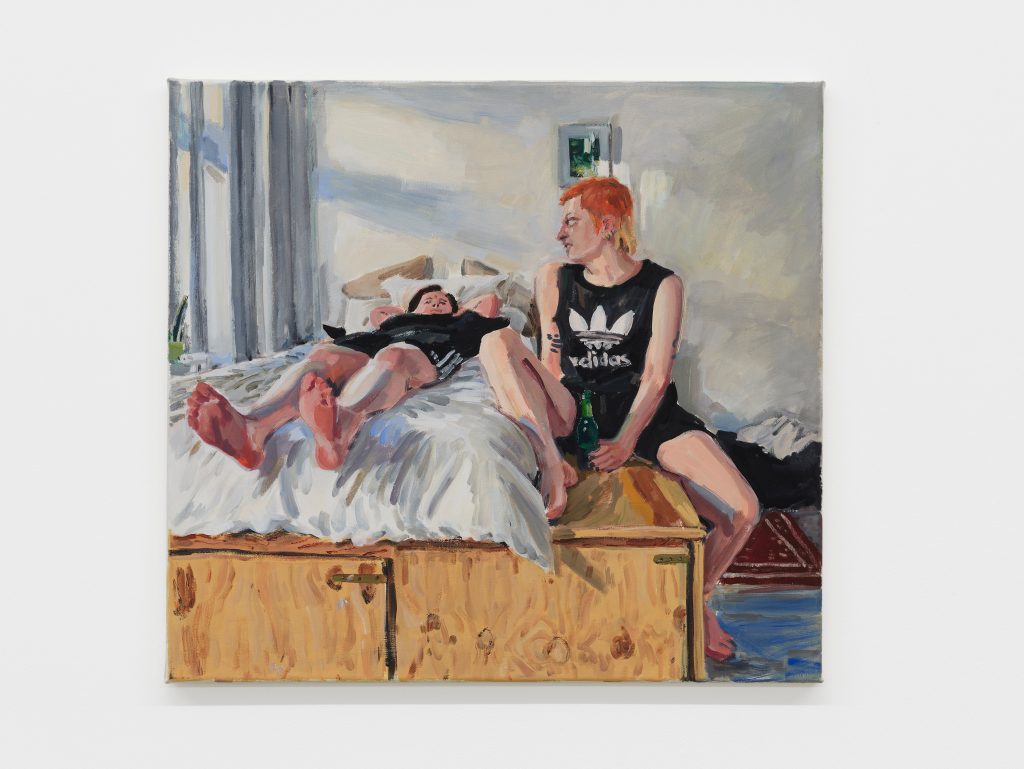
Elizabeth Ravn, Magdo and Lucci (Neukölln Bed) II, 2022. Courtesy the artist and Deborah Schamoni. Photo: Ulrich Gebert
This turn to local and intimate subject matter does seem to fit naturally with the recent idea of a “vibe shift” away from the moral and activist rhetoric of the last years. Yet, while in certain instances of this “cool-kids” style, the sentimental seems to repudiate the political, the latter is actually importantly present in some paintings that might be seen as adjacent to hypersentimentalism.
I would be remiss not to mention artists like Doron Langberg and Salman Toor, who respectively depict intimate portraits and social scenarios, turning to close circles from their queer communities, and even painting each other.
Hypersentimentalism is about world-building but also, and maybe more so, about world-preserving. A 2022 exhibition at the ICA in Boston called “A Place for Me” offered a smart survey of that kind of gesture of empowerment as well, showing artists “depicting what they love—their friends, lovers, and family; studio spaces and homes; and the scenes that make up their everyday.” Among others, it included figurative works by Ambera Wellman and Louis Fratino (the latter whose tender portraits of everyday queer intimacies have been soaring at auction.)
The fact that hypersentimental painting relies on there being insiders and outsiders doesn’t mean it should be discredited automatically. The desire to showcase quotidian moments is powerful, as is the urge to paint those we care for. Both are an antidote, even if just in an ephemeral sense, for the fatigue we all feel after the last decade of targeted marketing and online polemics. What do we really want? What do we actually desire? The answer is beautiful quaint, maybe: each other.